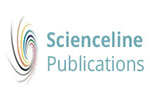(2024) Protein Concentration, Anthelmintic Activity, and Microbial Contamination of the Laboratory-Produced Chitosan-Encapsulated Bromelain Batches. World's Veterinary Journal. pp. 194-201. ISSN 2322-4568
|
Text
WVJ14(2) 194-201, 2024.pdf - Published Version Download (464kB) |
Abstract
Bromelain has been shown to have potential as an anthelmintic for controlling livestock nematodes, such as Haemonchus (H.) contortus. The present study aimed to evaluate the in vitro quality of the laboratory-produced nanoencapsulated bromelain (NEB) and its activity against H. contortus. The acid-base extraction method was employed to extract four different batches of bromelain from the peels of fully ripened pineapples. It was encapsulated in chitosan to form the nano-encapsulated bromelain complex. Standard biochemical methods were employed to determine the bromelain concentration, protein concentration, in vitro anthelmintic activity against various stages of H. contortus (egg, larva, adult), and bacteria contamination for the four NEB batches. The mean concentration of extracted bromelain was 4.3 mg/ml in all four batches. There were no variations in the protein concentrations between the batches of NEB, which ranged from 1, 090 mg/ml to 1.205 mg/ml. Although there were no significant differences in different batches, a variation in NEB inhibitory concentration (IC50) was observed according to the different parasitic stages. The highest activity was for adult worms (LC50 =0.2454 ± 0.05 mg/ml), followed by the eggs (IC50 = 0.3 ± 0.07 mg/ml), and the larval stage (IC50 =0.9 ± 0.45 mg/ml). Despite the identification of certain bacterial species in the raw pineapple extract, the final product of all four batches of NEB remained free from any bacterial contamination. The current study indicated that NEB’s concentration, protein concentrations, and anthelmintic activity did not vary significantly across the different batches of NEB. Additionally, the encapsulation process ensured that the final product was free of bacterial contamination and thus safe for use in animals. Open Access: This article is licensed under a Creative Commons Attribution 4.0 International License, which permits use, sharing, adaptation, distribution and reproduction in any medium or format, as long as you give appropriate credit to the original author(s) and the source, provide a link to the Creative Commons licence, and indicate if changes were made. The images or other third party material in this article are included in the article’s Creative Commons licence, unless indicated otherwise in a credit line to the material. If material is not included in the article’s Creative Commons licence and your intended use is not permitted by statutory regulation or exceeds the permitted use, you will need to obtain permission directly from the copyright holder. To view a copy of this licence, visit https://creativecommons.org/licenses/by/4.0/. © The Author(s) 2024
| Item Type: | Article |
|---|---|
| Keywords: | acid; base; bromelain; chitosan; plant extract; protein, adult; animal experiment; anthelmintic activity; Article; bacterium contamination; bacterium identification; biochemical analysis; controlled study; drug efficacy; drug isolation; drug quality; drug safety; fruit peel; fruit ripening; Haemonchus contortus; helminth larva; IC50; in vitro study; laboratory; larval stage; LC50; livestock; nanoencapsulation; nonhuman; pineapple; worm egg |
| Subjects: | S Agriculture > SF Animal culture |
| Divisions: | World's Veterinary Journal (WVJ) |
| Page Range: | pp. 194-201 |
| Journal or Publication Title: | World's Veterinary Journal |
| Journal Index: | Scopus |
| Volume: | 14 |
| Number: | 2 |
| Publisher: | Scienceline Publication, Ltd |
| Identification Number: | https://doi.org/10.54203/scil.2024.wvj24 |
| ISSN: | 2322-4568 |
| Depositing User: | Dr. Alireza Sadeghi |
| URI: | http://eprints.science-line.com/id/eprint/1196 |
Actions (login required)
 |
View Item |


 Dimensions
Dimensions Dimensions
Dimensions